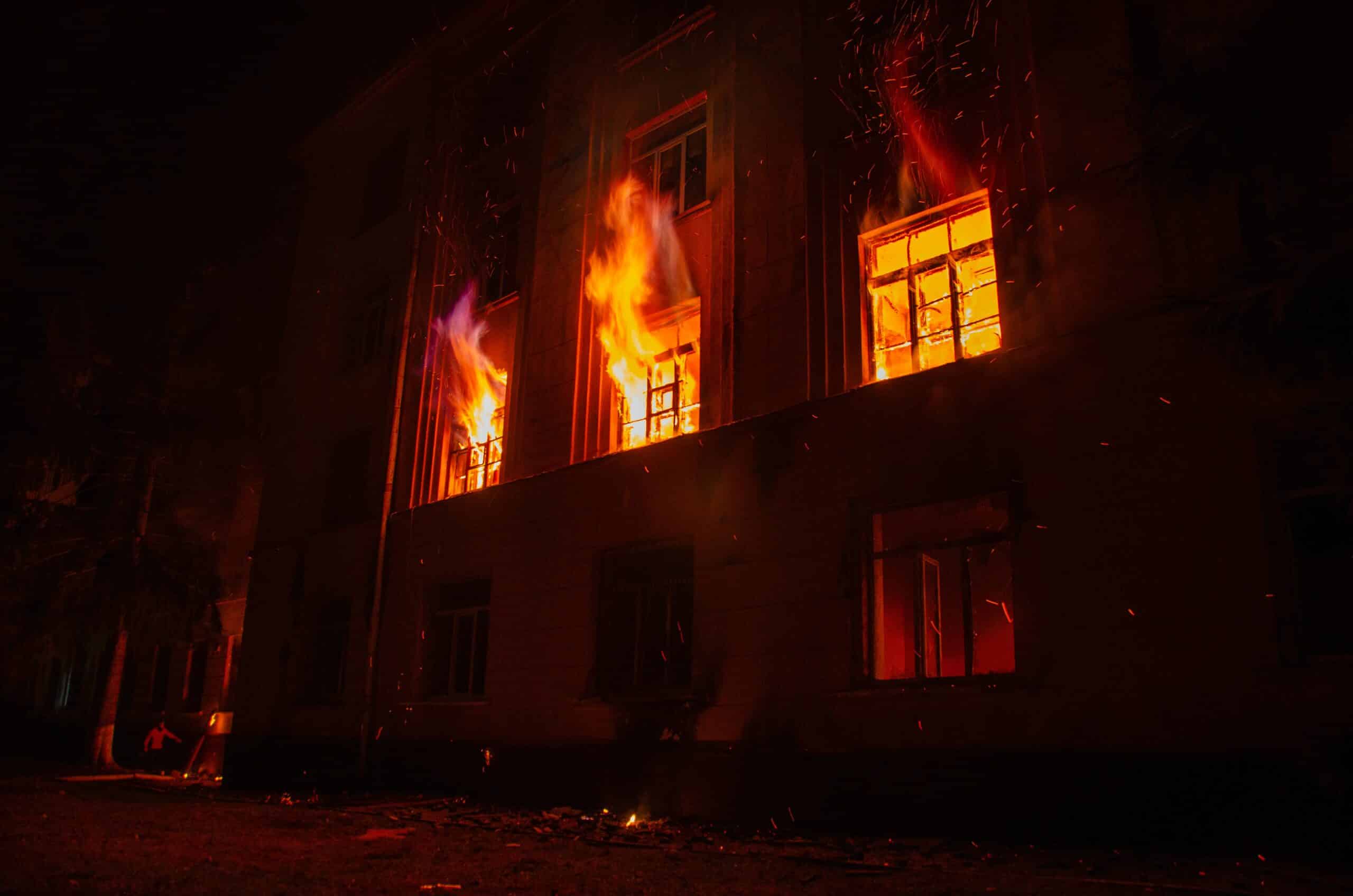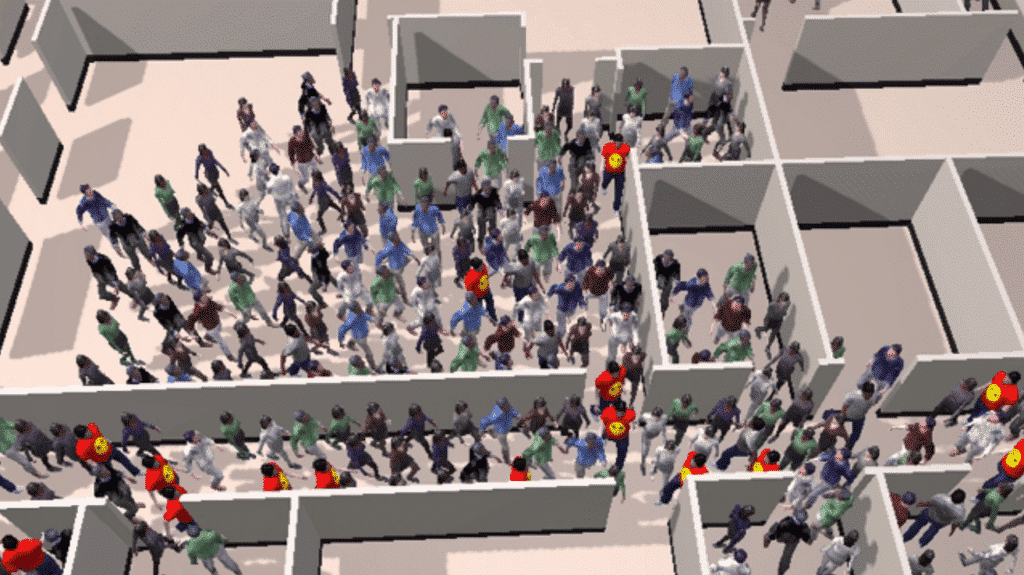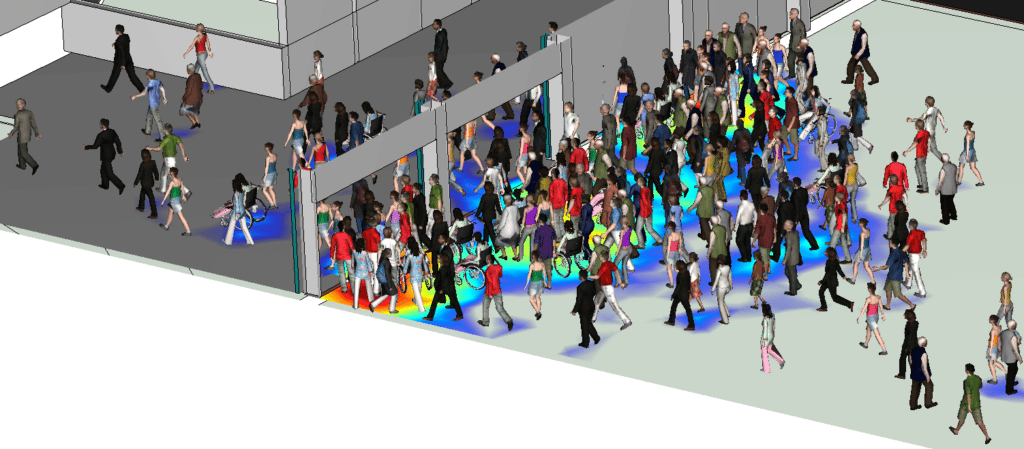Dynamic modeling of the evacuation of people
Accueil » Expertise » Smoke Control Engineering » Dynamic modeling of the evacuation of people
Prediction of human movements for better compliance with life safety
- A passionate team
- Exclusive domains
- All sectors
- Data center
- Proven expertise
Learn more:
Our projects :
Dynamic modeling of the evacuation of people
Buildings must allow people to move freely at all times and to evacuate quickly in the event of an emergency. Using simulation to optimize the flow of people can result in an improved environment and more effective fire safety design in high-traffic, large venues, from shopping malls to train stations and from airports to sports stadiums.
EOLIOS has extensive experience in computer modeling of evacuations and uses this expertise to evaluate theoretical pedestrian movement in the event of a fire. By providing 3D output, we demonstrate how the built environment functions when large numbers of people are present and provide real-time visualizations. By visualizing how the geometry works, we can predict potential problems and develop design solutions to avoid them.
Simulation of the evacuation of people
The most complex geometries are possible – including spiral staircases and escalators. All slopes are conceivable, from vertical ladders to slightly inclined ramps. Escalators/escalators can also be configured.
For the most complex studies, the elevators are modeled taking into account evacuation parameters. Each elevator has a priority list of floors to serve. Users move to the nearest elevator or to a holding area in case of emergency evacuation. The elevators have a maximum capacity and can be grouped in columns of several elevators to answer calls from different floors.
In the simulation each agent acts individually. It can have a particular profile (size, speed, does not take the stairs, priority etc.) as well as a behavior (waiting areas, assigned exits, crossing points etc.). Each agent makes dynamic decisions influenced by its environment. Agents can react to opening or closing doors and queuing during evacuation.
The models can integrate people with reduced mobility, needing assistance for their movement (people in wheelchairs, in a bed etc. for hospitals, Ehpad). “
The results appear in the form of extremely realistic videos, visible from all points of view, as well as density maps, exit time curves, gate flow monitoring, etc.
Our missions
We provide value by testing different building configurations in a fire scenario. We couple the simulation analyses of smoke control with evacuation to ensure that the systems are properly sized.
We evaluate alternative options, examining the implications of removing a staircase from a building or the effects of a fire scenario on escape routes in remote locations.
All buildings require safe and efficient evacuation, however, computer modeling allows for a much more ergonomic design in the early stages of a project. Some of the benefits include:
- Design - effective design for areas such as passageways, stairs, escalators, elevators and staging areas
- Reduce - congestion and queuing in key areas such as entrances and gate systems
- Optimize - the positioning of retail outlets and advertising in relation to traffic, trip purpose and population profile
- Facilitation - successful operational planning for access, safety and security for normal and emergency circumstances
Objective of the evacuation study in the context of fire safety
Today, it is not envisaged to propose an alternative to the normative solutions as regards the implantation, the number and the width of the evacuation routes. However, it is considered desirable, in compliance with the minimum regulatory requirements for evacuation, to be able to couple evacuation studies with smoke control engineering.
With regard to the safety of people, the evaluation of the effectiveness of the smoke extraction system requires a comparison of the time taken to reach the criteria of non-tenability (visibility through smoke, temperature, etc.) and the evacuation time.
The use of an evacuation analysis, as sometimes already requested for some smoke control engineering studies, is a source of safety improvement and an additional supporting document in the realization of a smoke control engineering study.
We provide the necessary justifications to the control offices
Thanks to the simulations of evacuation of people coupled with the simulations of smoke extraction, we can determine at an early stage the smoke extraction systems and the various natural ventilation openings are in conformity. We analyze smoke nests in trapped areas and make structural and technical suggestions to keep smoke-free escape routes. With the help of videos, we can to illustrate the propagation of smoke gases and thus agree on the necessary measures in consultation with all those involved in the design.
We organize the discussions with the inspection offices in order to justify the design with regard to an interpretation of the standard. The many years of experience we have gained in large projects are particularly advantageous in this context.






